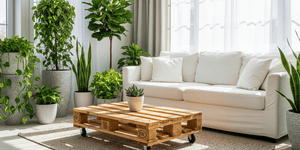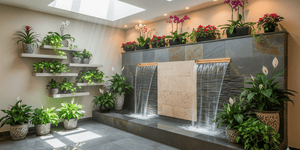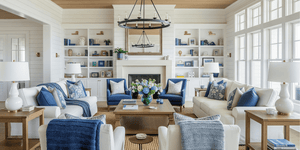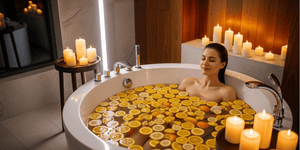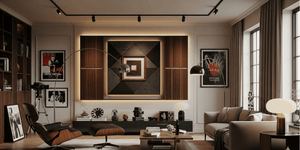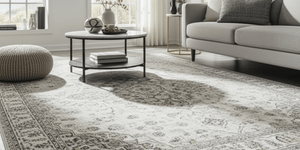Illuminating your Space: Choose the Right Light Bulbs to Add Allure

What makes you happy about your space? The way it smells? The way it feels? The way it looks? All of the above? Whatever it is that brings you joy; you want to be able to fully enjoy your space, and part of that is making sure you have the right light bulbs.
The type of light bulbs you choose can make a big difference in the overall ambiance of your space. They can also affect your mood, so it's important to choose wisely. To help you out, we have compiled 7 tips on choosing the right light bulbs for your space. Let's get started.
Consider the Type of Lighting You Want
One of the most important things to consider when choosing light bulbs is the type of lighting you want. There are three main types of lighting: ambient, accent, and task.
Ambient Lighting
Ambient lighting is the general lighting of a space. It's designed to evenly illuminate a room and can be achieved with ceiling lights, floor lamps, chandeliers, wall-mounted fixtures, or table lamps.
Accent Lighting
This type of lighting is used to highlight certain features in a space. It's often used to draw attention to artworks, architectural details, or plants. For example, if you have a fireplace, you might use accent lighting to highlight it.
Task Lighting
When you are looking for lighting to help you perform specific tasks like reading, cooking, or even doing makeup, task lighting is what you need. This type of lighting is usually more focused and brighter than ambient or accent lighting. Desk lamps, under-cabinet lights, and pendant lights are all examples of task lighting.
Determine the Right Color Temperature
The color temperature of a light bulb is measured in Kelvin (K). Warm light has a color temperature of 2700K to 3300K. This type of light is often used in living rooms and bedrooms because it creates a cozy, inviting atmosphere.
Cool light has a color temperature of 3300K to 5300K. This type of light is mostly used in kitchens and offices because it creates a brighter, more energizing atmosphere.
Choose the Right Bulb Shape and Style
The shape of the bulb also plays a role in the overall look and feel of your space. For example, round bulbs create a softer look, while angular bulbs create a more modern look. A T9 shape bulb, for example, is often used in chandeliers and pendant lights. It is a great addition if you want to add a touch of elegance to your space.
The bulb style is also important to consider. The Edison Bulb, is making a huge comeback because of its vintage appeal. It adds that perfect finishing touch to any space with a rustic or industrial vibe.
Consider the Size of the Bulb
There are a plethora of bulbs, all different sizes. But what size light bulb should you choose? It really depends on the fixtures you are using and the overall look you are going for.
For example, if you have a small lamp, you might want to use a small bulb so that it doesn't look out of proportion. Or, if you have a large fixture, you might want to use a large bulb to make a bold statement.
Look at the Bulb's Finish
The finish of the bulb can also affect the overall look of your space. There are many finishes, including black, white gold, copper, grey, silver, bronze, wood tones, and the list is endless. Consider your space and what type of finish would complement it.
Consider the Wattage and Lumens
The wattage of a light bulb is a measure of its power consumption. The higher the wattage, the more power it consumes. Lumens, on the other hand, is a measure of the light output.
To give you an idea, a 60-watt incandescent bulb produces about 800 lumens of light. A 9-watt LED bulb, on the other hand, produces the same amount of light. So, when choosing light bulbs, it's important to consider both the wattage and lumens.
Know the Different Types of Light Bulbs
Technology has come a long way in ensuring our homes are energy efficient and that we get the best lighting possible. There are now a variety of light bulbs to choose from, including incandescent, halogen, fluorescent, and LED.
Incandescent Bulbs
Incandescent bulbs are the traditional type of light bulbs. They work by heating a metal filament until it becomes hot and emits light. However, they are not very energy efficient as most of the energy is converted into heat rather than light.
Halogen Bulbs
Halogen bulbs are similar to incandescent bulbs in that they also have a metal filament. The difference is that the filament is surrounded by a halogen gas. This gas allows the filament to heat up to a higher temperature, which results in a brighter light. Halogen bulbs are more energy-efficient than incandescent bulbs but not as much as LED bulbs.
Fluorescent Bulbs
Fluorescent bulbs work by passing an electric current through a tube filled with mercury vapor. This causes the mercury vapor to emit ultraviolet light. The UV light then interacts with a phosphor coating on the inside of the tube, which produces visible light. Fluorescent bulbs are very energy-efficient and have a long lifespan. However, they contain mercury, which can be harmful if the bulb is broken.
LED Bulbs
LED (light-emitting diode) bulbs are the most energy-efficient type of light bulb. They can save you up to 80% on your energy bill. LED bulbs also have a long lifespan, typically lasting about 25,000 hours. They work by passing an electric current through a semiconductor material (diode), which emits light.
Bottom Line
Choosing the right light bulbs may seem like an uphill task but considering the above tips will make it a whole lot easier. If you are still confused about the best indoor or outdoor lighting to install in your space, we have you covered! At Urban Ambience, we have a wide range of innovative, high-quality, energy-efficient lighting options for you to choose from. Visit our website or contact us today, and one of our experts will be more than happy to help you choose the perfect lighting to add allure to your space.
